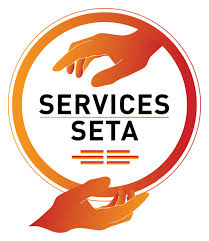Introduction
South Africa continues to face challenges of youth unemployment, skills shortages, and limited workplace opportunities. One of the most effective solutions introduced by government and industry partners is the learnership system. Learnerships are structured programmes that combine theoretical classroom learning with real workplace experience, leading to nationally recognised qualifications.
The Sector Education and Training Authorities (SETAs) play a central role in coordinating and funding these programmes. In 2025, SETA learnerships remain a vital pathway for young people, unemployed adults, and existing workers who want to improve their skills and career prospects. This article provides an overview of SETA learnerships for 2025, including their structure, benefits, eligibility criteria, and how to apply.
What is a SETA Learnership?
A learnership is a formal, work-based learning programme designed to help learners gain both theoretical knowledge and practical skills. It is registered with the South African Qualifications Authority (SAQA) and leads to a qualification on the National Qualifications Framework (NQF).
The key difference between a learnership and a traditional study programme is that learners are employed or placed in a workplace for the duration of the programme. This ensures they acquire not only academic training but also hands-on industry experience.
The Role of SETAs
SETAs, or Sector Education and Training Authorities, are bodies established to oversee education and training in specific economic sectors. There are currently 21 SETAs in South Africa, each focusing on a particular industry, such as:
YOU CAN APPLY ON THIS WEBSITE MENTION HERE
- AgriSETA – Agriculture sector
- CETA – Construction sector
- FASSET – Finance and Accounting sector
- MICT SETA – Media, Information, and Communication Technologies sector
- MERSETA – Manufacturing, Engineering, and Related Services sector
- HWSETA – Health and Welfare sector
- TETA – Transport Education and Training sector
Each SETA works with employers, training providers, and learners to identify skill gaps, fund programmes, and ensure training meets industry needs.
Benefits of SETA Learnerships 2025
Learners who participate in a SETA-accredited learnership enjoy a wide range of benefits, including:
- Nationally Recognised Qualification – Upon completion, learners receive an NQF-aligned qualification registered with SAQA.
- Workplace Experience – Programmes combine theory with practical work exposure, making graduates more employable.
- Stipend – Learners receive a monthly allowance to cover basic expenses. The amount depends on the SETA and the specific programme.
- Mentorship – Learners are guided by experienced professionals in their field.
- Career Opportunities – Many learners secure permanent jobs after completion, while others use the qualification to pursue further studies.
- Skills Development – Participants acquire workplace skills such as communication, teamwork, and problem-solving.
Who Can Apply for SETA Learnerships?
Eligibility criteria may vary across SETAs and programmes, but general requirements include:
- South African citizenship with a valid ID document.
- Age group: Usually between 18 and 35 years old.
- Education: Minimum requirement is a Grade 12 (Matric) certificate. Some technical programmes may require specific subjects such as Mathematics, Science, or Accounting.
- Employment status: Programmes are often targeted at unemployed youth, though some learnerships are designed for existing employees.
- Skills: Basic computer literacy and communication skills are advantageous.
Duration of Learnerships
Most SETA learnerships run for 12 months, although some may last longer depending on the qualification. Learners typically spend part of their time in a training institution and the rest in a workplace environment.
Types of Programmes Offered by SETAs
SETAs provide a wide range of programmes to address different industry needs. Some of the most common include:
- Learnerships – Work-based training leading to a qualification.
- Internships – Practical exposure for graduates or students completing qualifications.
- Apprenticeships – Technical training for trades such as welding, plumbing, and electrical work.
- Bursaries – Financial support for formal studies at universities and colleges.
- Skills Programmes – Short, focused training initiatives that address specific workplace needs.
- Adult Education and Training (AET) – Literacy and numeracy programmes for adults, especially in rural areas.
Application Process for SETA Learnerships 2025
Applying for a SETA learnership requires preparation and attention to detail. Here are the general steps:
- Identify the Relevant SETA – Each SETA operates within a specific sector. For example, if you are interested in IT, check the MICT SETA.
- Visit the Official Website – APPLY ON THE WEBSITES MENTIONED ABOVE
- Prepare Documentation – Commonly required documents include:
- Certified copy of your South African ID
- Certified copy of your Matric certificate or highest qualification
- Updated CV
- Proof of residence
- Submit the Application – Applications are often completed online, though some may require physical submission.
- Assessments and Interviews – Shortlisted candidates may be invited for testing or interviews.
- Placement – Successful learners are placed with employers and begin the programme.
Important Notes
- Always confirm that the training provider or facilitator is accredited with the relevant SETA.
- SETA learnerships provide opportunities but do not guarantee permanent employment after completion.
- Stipend amounts vary depending on the sector and qualification.
- Deadlines are strict; applications submitted late or without required documents will not be considered.
Career Opportunities After SETA Learnerships
Completing a SETA-accredited learnership opens doors to various careers across different industries. For example:
- Finance & Accounting → Bookkeepers, Payroll Assistants, Junior Accountants.
- Information Technology → Systems Support, Software Testing, Network Administration.
- Construction → Site Supervisors, Safety Officers, Project Assistants.
- Agriculture → Farm Managers, Technicians, Agricultural Advisors.
- Health & Welfare → Care Workers, Community Health Assistants, HR Clerks.
Employers value candidates with both a recognised qualification and workplace experience, making learnership graduates highly competitive.
Why SETA Learnerships Matter in 2025
The National Skills Development Plan (NSDP) prioritises learnerships as a way to bridge the gap between education and employment. SETA learnerships are particularly important because they:
- Address industry-specific skills shortages.
- Provide structured opportunities for unemployed youth.
- Support transformation and inclusion in the workplace.
- Strengthen the link between employers and training institutions.
By 2025, the demand for skilled workers in digital technology, construction, healthcare, and green economy sectors is expected to grow. SETA learnerships will play a crucial role in preparing South Africans to meet these needs.
Conclusion
The SETA Learnerships 2025 provide a valuable opportunity for South African youth and workers to gain practical skills, workplace experience, and nationally recognised qualifications. With support from 21 SETAs across different industries, learners can choose programmes that align with their interests and career goals.
Although completing a learnership does not guarantee permanent employment, it significantly enhances employability and opens doors to further education and training opportunities. For anyone seeking to build a sustainable career, SETA learnerships are a pathway to personal and professional growth.

